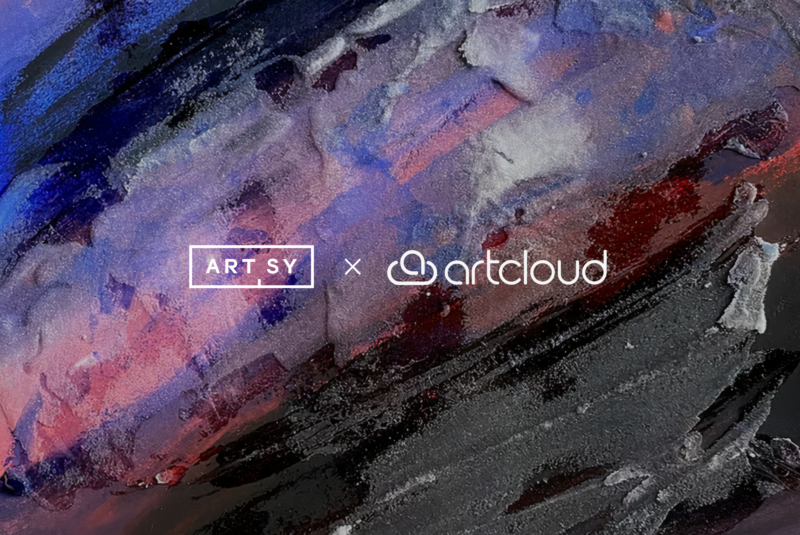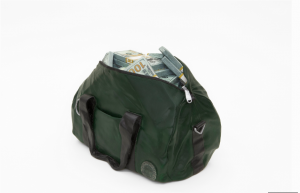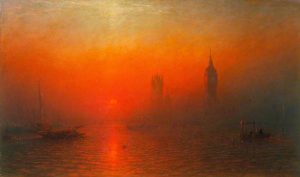
The seismic shift that is running through the art market is rapidly increasing in pace and strength. There is a consensus of worry across all aspects of the market, from auction houses, small galleries and collectors, as well as those new comers with fledgling collections that contain three or four works. The worry is well founded as recent events are spelling out the problems in published statistics and figures. The downturn in which we find ourselves, is affecting the way business is done in all areas of the art world.
There has been an infectious problem that is tainting all of arts business’s, leaving few arenas untouched. The face of the problem is two fold and remarkably obvious. Liquidity is the first problem because it stifles transactions and forces sales, (this becomes the path for those in financial jeopardy) and the other, the age old human condition of confidence.
A recent report from Bloomberg paints a very bad picture for those involved in the market place. Certain parties rely heavily on hard business statistics to inform them of current events and upcoming opportunities. These are often the first port of call in a downturn, as they seem to be more definite when faced with a climate of uncertainty. They can also serve well to highlight the pitfalls and the possibility of shrinking asset value’s within an collection. (things that bank managers might like to know about).
Art Tactic’s Anders Petterson states that ‘confidence is at an all time low,’ and adds ‘there will be further price falls in the foreseeable future’. The trick with assessing confidence in statistical form is a challenging one (deals between people are more often conducted quietly and there is a tendency to be optomistic when in conversation, even if your not behind closed doors.) Although Art Tactic have published the results of a questionnaire sent to 145 U.S. and European auction houses, collectors, specialist dealers and advisers. The survey stated that 10 to 1 the answer’s were negative. The surprise to the level which confidence has fallen, is highlighted by the fact that half of respondents expected a 30-50% drop in prices across the board. More than half don’t expect a recovery for contemporary art prices to recover within three years. 50% said it might take five years to regain the height of the recent boom.
Sotheby’s have conceded that last months pricing drop in impressionism, modern art and contemporary art are falling back to prices three years ago. Tobias Berger (Sotheby’s) explains this in their slickly produced visual presentation, ‘Private view- Contemporary art market-A candid look from the inside.’ Having softened the blow to the real dilemma by stating the level of the price fall, he barely mentions the focus of the research behind his statement, this is because the collected data for their proclamation is made up largely of works of great stature, that are either rare, fresh or highly valued. This is the type of scenario that is to induce confidence rather than provide the cold hard facts that people involved in the market place actually desire. But Sotheby’s are quick to fuddle the agenda of such claims, they hint at reaching the bottoming out of the slump, with other speculative terms such as ‘pent up demand’ and ‘the re-emergence of long established collectors returning to the market place.’ These are supposedly the people now ready to return to the scene, following the exit of the oligarchs along with city bonus and hedge fund culture which led to the excess’s in price that followed their entry. I feel that there move is a bold one, although very politically shrewd as the implications are real, even if the direct statements are helpfully missing.
This bottoming out is hardly reflected in other data readily available across the scope of markets. None more so than the auction house sales figures themselves, The last sales from Sotheby’s and Christies raised $125m and $113m respectively. Over one third of lots went unsold and neither reached the bottom end of the presale lower estimates. The same evening last year commanded $315m, and $325m respectively, almost two thirds less this year. These are the real reasons the recovery isn’t happening. Especially when one looks at the news coming from the auction houses as well as the general economic news.
Christies has shut down operations in Australia and the persistent rumours of Sotheby’s following suit have recently been quashed, all be it belatedly. But the 800 job losses in Christies London can hardly be miss-interpreted. This is a quarter of their staff. The times are presently harder and the losses reflect this. The problems that are linked to this are exacerbated as costs mount as the re adjustment of profits had to take into account the guarantee agreements. These were agreements used by many auction houses that were put in place to secure business in a bear market place. These were contracts that secured a bottom price for sellers. They made sense to secure deals that would have chosen else ware to sell, but most of these agreements were in place before the price collapse and the auction houses had to make up the difference to the vendors if the lower estimate of the lot was not reached at the sale. This proved costly in recent months as the contracts worked themselves through a downward slide in pricing. In the contemporary art auction last November Sotheby’s had reputedly lost some $28m from agreements such as these. As a privately owned company Christies does not release this type of information to external parties. Although all companies are abandoning this practice.
There are almost no casualties in the faltering of the art market place, with Asia, Russia and China all suffering at the same kind of pace as the rest of the global market. But there are some exceptions to this that promise to offer some interesting artists, Indonesian art and the Brazilian art market are two that need to be mentioned, especially Brazil as it is well positioned economically and less affected less by the global situation and has an already established infrastructure within the art world of artists, curators, galleries and collectors. Whereas Indonesia has just embarked on its tentative journey, by securing government funding for the infrastructure of the arts for the first time. As it trickles down, it is fertilising a whole new scene. But for the rest of the world it seems there is no escape.
Sotheby’s Asia chief executive Kevin Ching has stated that there will be no redundancies in the region despite a very lean year. This has more to do with the long term presence that they desire in the region, as I feel they wish to be established as the main house when the climate begins to blow fairer. Until such time they intend to auction wines as well, worth est. $3m, at their Hong Kong sale in April. Wine is one of a select few categories holding up in Asia with 80% of lots finding buyers at the sales held by Christies and Acker Merral& Condit co.
These are the type of thing’s companies can do to limit the impact of readjustments in their traditional market place. But when you are specific in your business, it can tell an altogether more poignant tale. The Asian Art Fair in New York that was due to take place in March from the 11th, 15th has been cancelled. Haughton International Fairs have posted on their web site. ‘Many of the dealers who had contracted to take part were not in a position to go forward in the current climate. And as such we have decided a fair would put an untenable drain on their resources’. This is obviously as a result of a large number of dealers wishing to withdraw from the fair and pay the cancellation fee. That and not selling enough floor space to begin with. Coupled with salespeople on the phones exhausting the leads, and coming up with the possibility of a downsized fair that essentially would be unprofitable to all involved. There is a not a great deal of surprise here.
It is safe to say companies are doing what companies do in downturns. They are able to utilise corporate tactics such as staff cuts, employ diversifying or consolidating practices, change services and instigate budget cuts, and of course implement company restructuring, to name but a few. But what of the dealers and the gallery owners, The life blood in the art market. These are outfits to small in size to undertake those corporate policies. So what can be done to outfits that operate in such narrow parameters, and more often than not, their own carefully positioned and honed niche market. What can they do to an already lean operation.
Artists, fairs and recent sales are replaced in conversation between dealers, with the topic of survival. Many dealers are looking for ways to act that will be best for them in the coming few years. There are some interesting and diverse views on this issue. It can provide an insight to the personal philosophy of dealers rather than shed light on any particular mode of successful action that must be taken to avoid collapse.
Some galleries are choosing to change the type of show that would have been planned some months before and are opting for works that have a greater chance of selling. Others are doing the opposite and going for large impressive shows to outshine there counterparts and hopfully reposition themselves higher up the food chain when the recovery happens. This do or dare strategy entirely depends on the financial health of each gallery and is not reliant on bravery alone. Art with high production costs will have a harder time with most outfits choosing to use art in shows that has less of a speculative outlay. The postponing of these projects will have little impact in the coming months but as time goes by, these works will be sorely missed by the collectors that hold these values dear in there choice of art.
Dealers are openly talking about shutting down their gallery space in favour of saving costs, the most draining of a dealers overheads is gallery space. Some are talking about retaining the artists and putting on shows outside the gallery in alternative spaces, these in a recession become plentiful as the glut of commercial space becomes even greater. When a tactic like this is taken, it is important to maintain a presence at fair’s and to publicise all of your work to inform everyone of your ongoing presence in the art scene. This avenue can also be dismissed as taking a sabbatical, which translates as moving to a cheaper scene, even such as Berlin or Beijing where overheads are significantly less. This could ensure a continued presence and when times improve, they can rethink. The dealer can come back to occupy the original market space vacated in the downturn. There is no doubt that the reputations of such ventures will be enhanced by this, along with an easier access to a vibrant scene that will be useful in the future recovery.
For galleries where this is not an option, the opportunities are few and far between. Printing and postal costs will be selectively trimmed, as a reliance on its cheaper alternative, e mail becomes the order of the day for most galleries. That particular form of printed publicity will be reserved for the most valued of clients. The internet will rapidly become the tool of preference for mass publicity as galleries look at overheads and decide its time to embrace what is seen by some galleries as a cruder form of publicity for the finer things in life. This attitude is due to change not because of the benefits of the internet but as a way to reduce overheads. This is an interesting paradox because it was a position born from collective snobbery, and was widely seen to be used in conjunction with slickly printed material, as the way to entice interest in their shows, not the alternative.
Dealers may find themselves with a choice of spending the extra time available to them by running the office themselves thus letting go assistants that have always been efficient, understanding and loyal. This type of decision can prove to be a hard one. More so if the dealer in question has only one administrator, this is an easier decision to make in an operation of four or more people. Other areas of costs will be found at the selection of fairs that galleries attend. Some may take care with the associated costs of fairs and select only a couple of the best to maintain presence and target themselves directly, rather than using the scattered approach of recent years.
The outfits will have to be leaner and keener if their long term strategy is to come out winning.
Some however will not survive, this is the worrying aspect for the engine of the art world, the artists. As galleries shut and lots will,the artists are released from there previous agreements. There is going to be fierce competition to attain the artists with good reputations. This means that some of the more risky emerging artists will find themselves on their own whilst most others will have great difficulty finding galleries to take them on. There will be fewer traditional spaces to show in, but more freedom and a greater ease to find new unorthodox spaces. For as recessions per se, do not stifle creativity in any way shape or form but can a bad economic climate enhance an art scene? Of course it can. But it can also upset the life, money and art making balance, as this juggling act happens with most artists practices. Artists will find the going tough but not unendurable, as the option of not making art is even more unendurable to a true artist. This in turn will thin out the ranks as others who are less driven will not keep up a professional level of practice in favour of living a more comfortable existence, as some will leave the artistic profession to pursue an easier method of living at the expense of a weakened will to make art.
The overriding feeling I receive from conversations across the board of the art world is that this is going to be more of a cull akin to natural selection, than a mere readjustment of the art business. When the dust settles, it may even be an improvement.







